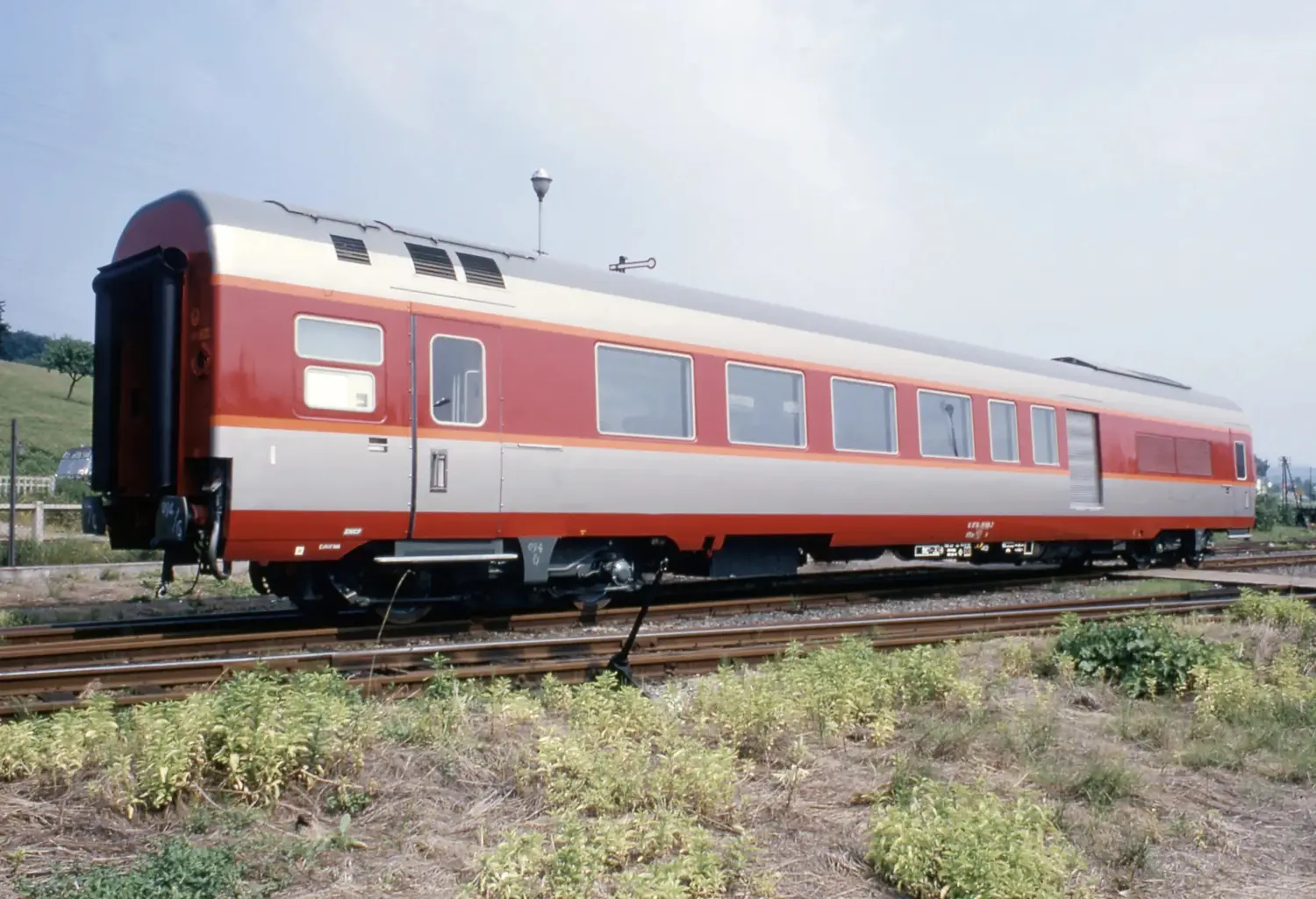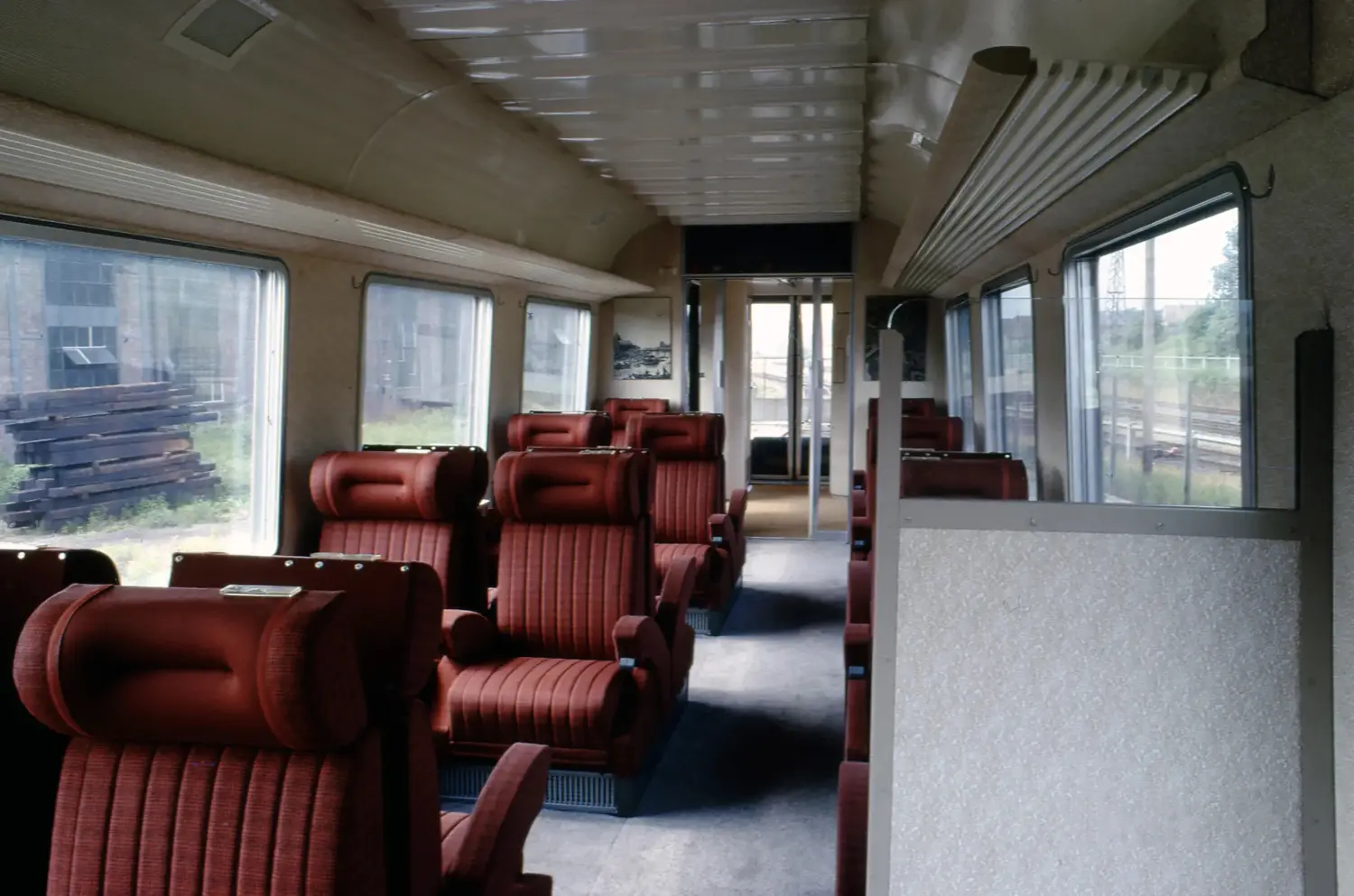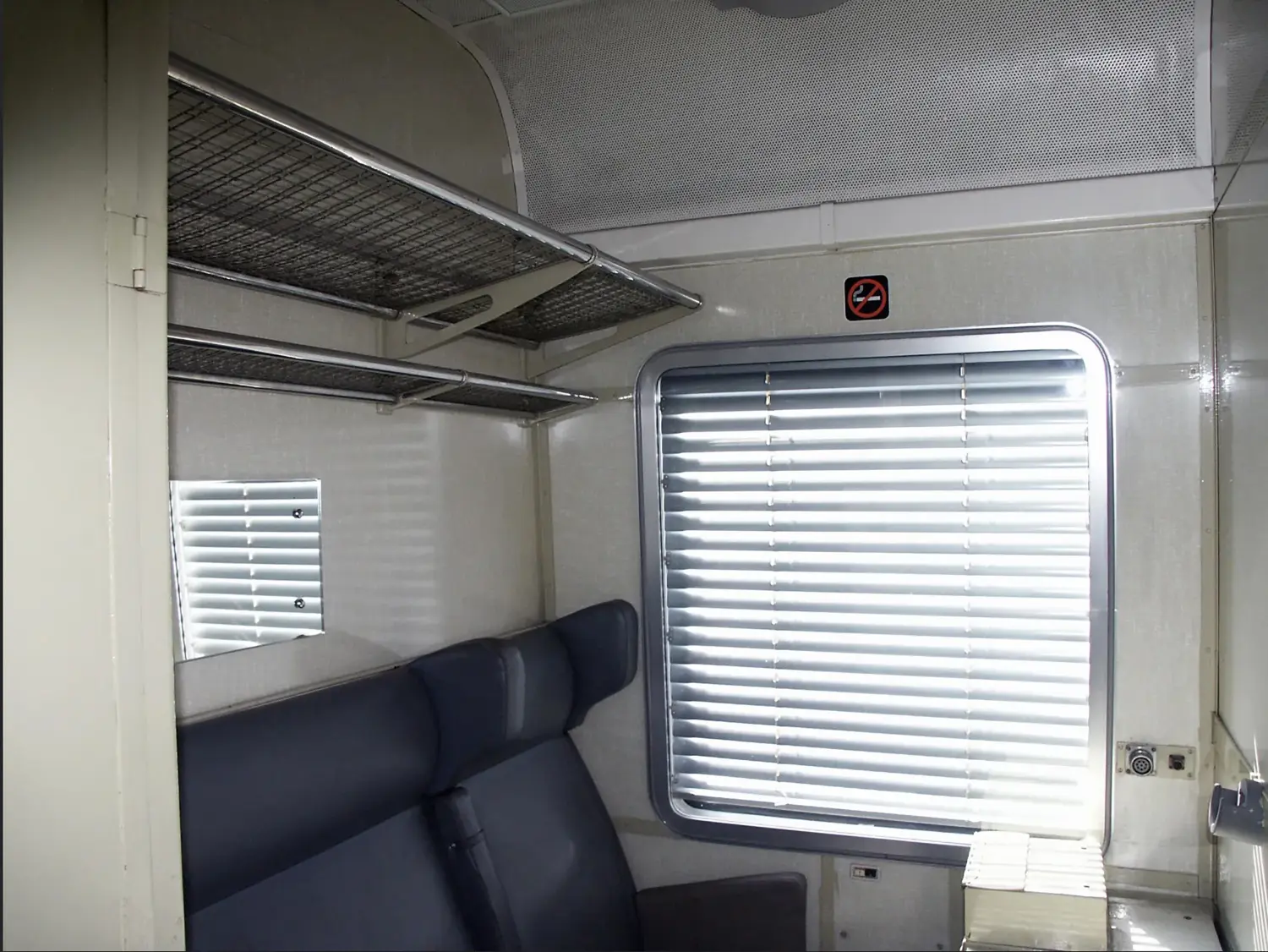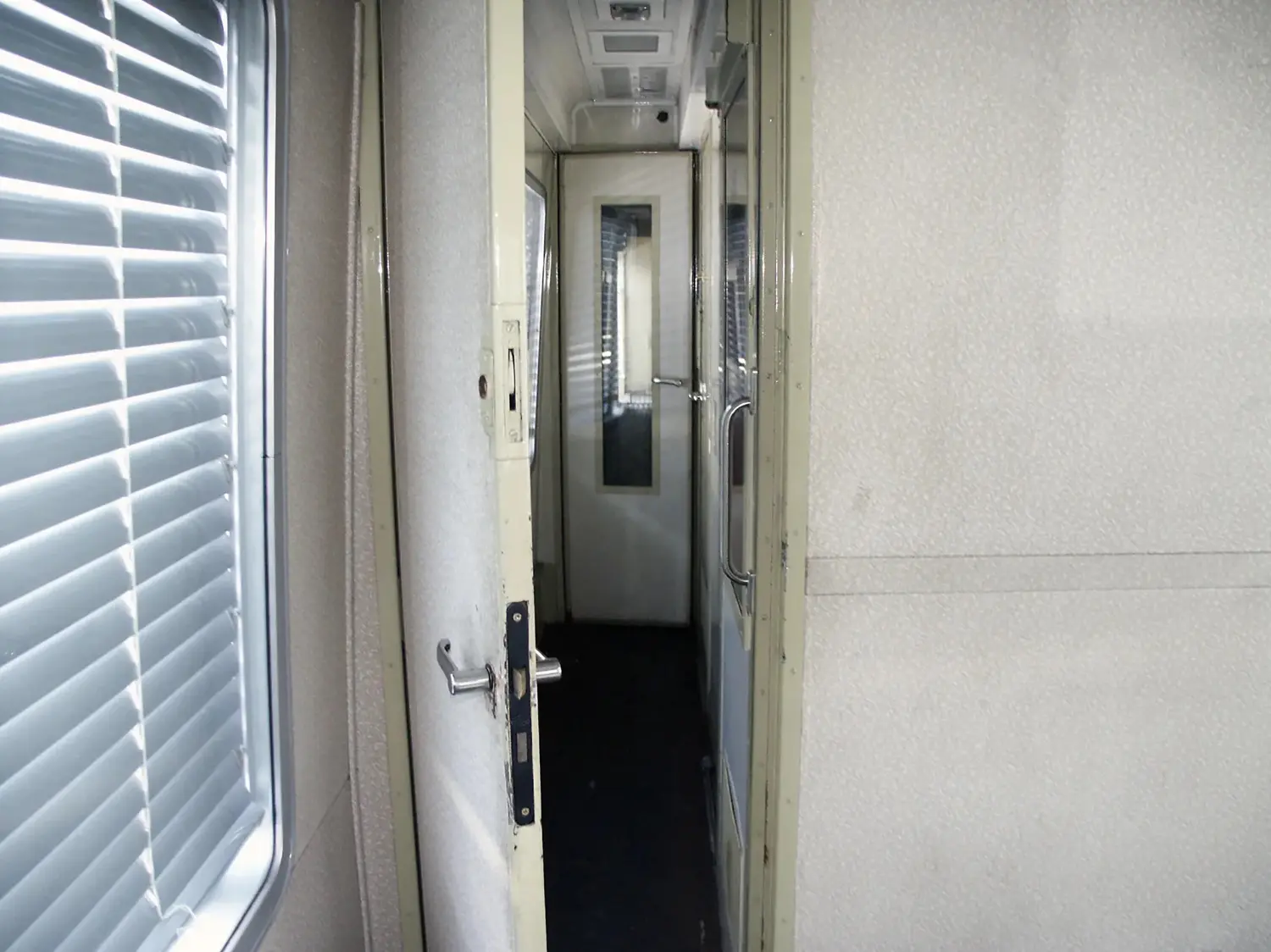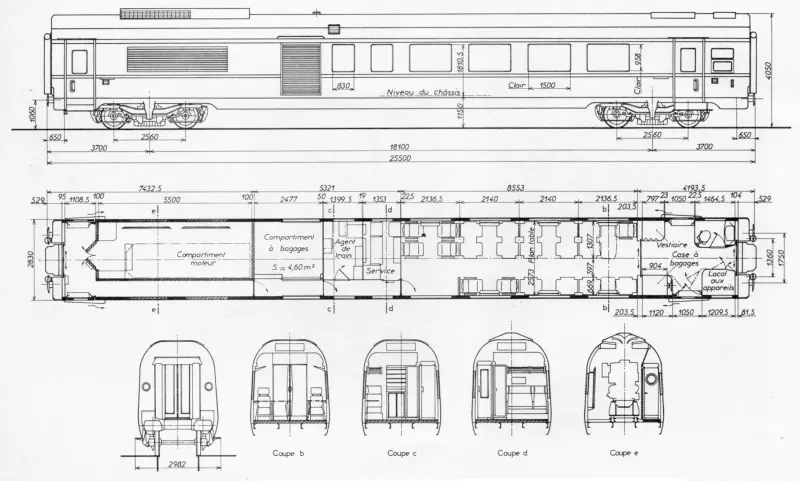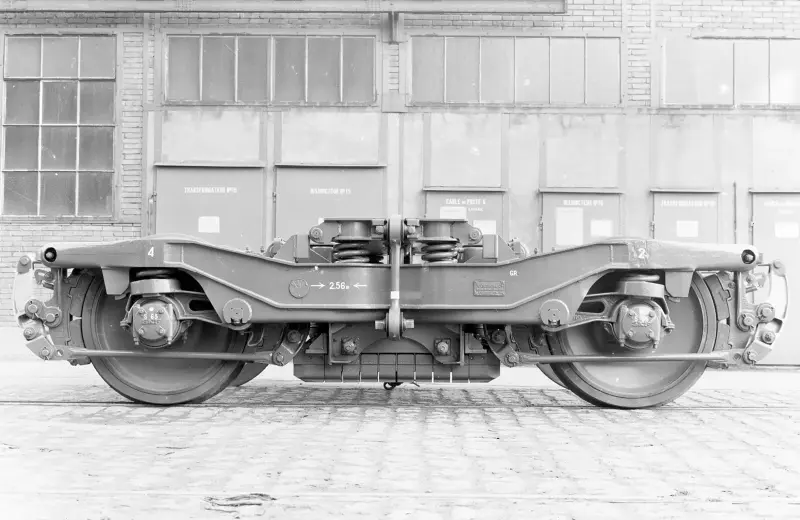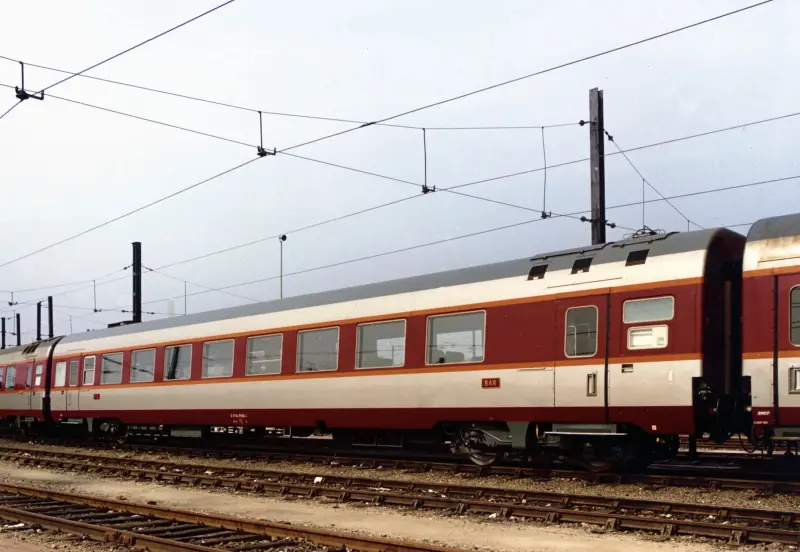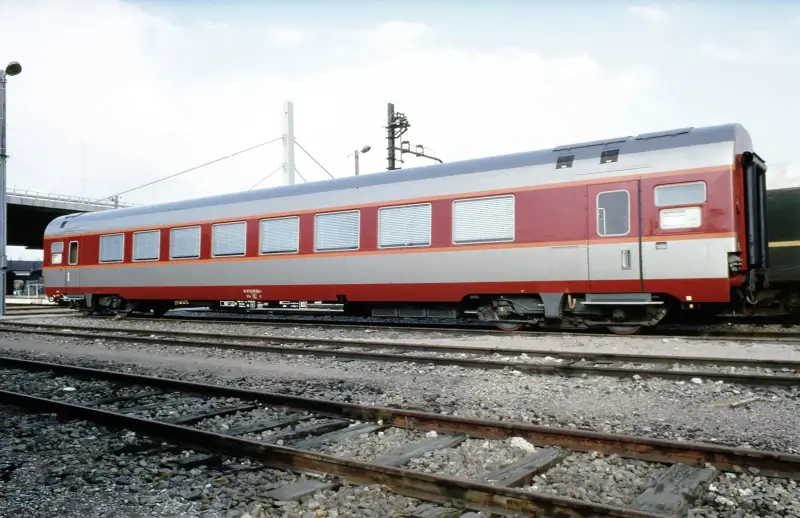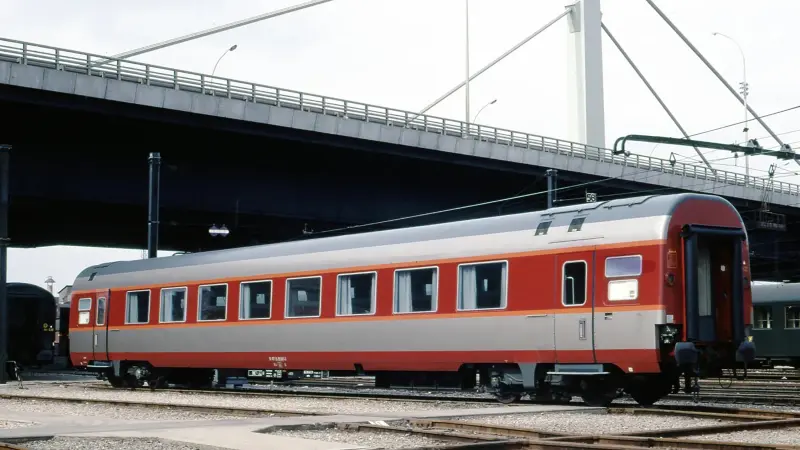A4Dtux
Also known as:
Grand Confort
UIC / EVN numbering:
61 87 81-99Vehicle type:
Registration country:
Railway companies:
Era:
IV - V
Built by:
Gauge:
Standard gauge (1'435 mm)
Length over buffers (mm):
25'500 mm
Width (mm):
2'830 mm
Height (mm | over lowered pantograph):
4'050 mm
Wheelbase (distance between bogies centers) (mm):
18'100 mm
Tare weight (t):
56 t
Bogies:
Y28F1*
*passenger compartment side
Y28G*
*generator side
*passenger compartment side
Y28G*
*generator side
Maximum speed (km/h):
200 km/h
1967
After studying and commissioning the "Mistral
69" cars, the SNCF decides to classify the trains
"Le Capitole" and "L’Etendard" as
Trans Europ Express (TEE) trains. SNCF also plans to operate
high-quality trains at speeds of 200 km/h on the Paris-Marseille
and Paris-Strasbourg routes. Promising results from the trials of
tilting body cars, designed to compensate for insufficient cant by
tilting the car body in curves with inadequate cant, lead to the
development of cars equipped with this mechanism to enhance
passenger comfort.
The Division of Studies and Cars within the SNCF's Material and Traction Department examines an evolution of the "Mistral 69" cars featuring a system to correct for insufficient cant, naming these cars "Grand Confort". Several companies respond to the call for tenders, and the company De Dietrich from Reichshoffen wins the contract. De Dietrich's solution, featuring a CORTEN steel structure with a high elastic limit that is less susceptible to corrosion, is selected for being more cost-effective than stainless steel, although the interior layout remains similar to that of the "Mistral 69".
A total order for 90 units is placed, distributed over three programs in 1967, 1968, and 1969, according to five different versions:
- A8u: side-aisle passenger coaches;
- A8tu: central corridor passenger coaches;
- Vru: dining cars;
- A4Dtux: generators cars;
- A3rtu: bar cars.
The deliveries of railway vehicles occur from December 1969 to July 1971.
Initially, these vehicles are put into service without the compensation system for cant, as it is not finalized at the time of manufacturing. This approach is later abandoned in the early 1970s, and the Grand Confort cars never receive this equipment for two primary reasons: the costs associated with its implementation and maintenance, and the strategic decision to focus on the development of high-speed trains, known as TGV.
Furthermore, the number of vehicles initially available proves insufficient for efficient operation, leading to the order of 13 additional A8tu cars from De Dietrich in 1972. These additional vehicles are subsequently delivered in 1973 and 1974.
The Division of Studies and Cars within the SNCF's Material and Traction Department examines an evolution of the "Mistral 69" cars featuring a system to correct for insufficient cant, naming these cars "Grand Confort". Several companies respond to the call for tenders, and the company De Dietrich from Reichshoffen wins the contract. De Dietrich's solution, featuring a CORTEN steel structure with a high elastic limit that is less susceptible to corrosion, is selected for being more cost-effective than stainless steel, although the interior layout remains similar to that of the "Mistral 69".
A total order for 90 units is placed, distributed over three programs in 1967, 1968, and 1969, according to five different versions:
- A8u: side-aisle passenger coaches;
- A8tu: central corridor passenger coaches;
- Vru: dining cars;
- A4Dtux: generators cars;
- A3rtu: bar cars.
The deliveries of railway vehicles occur from December 1969 to July 1971.
Initially, these vehicles are put into service without the compensation system for cant, as it is not finalized at the time of manufacturing. This approach is later abandoned in the early 1970s, and the Grand Confort cars never receive this equipment for two primary reasons: the costs associated with its implementation and maintenance, and the strategic decision to focus on the development of high-speed trains, known as TGV.
Furthermore, the number of vehicles initially available proves insufficient for efficient operation, leading to the order of 13 additional A8tu cars from De Dietrich in 1972. These additional vehicles are subsequently delivered in 1973 and 1974.
Sources: https://docrail.fr/les-voitures-grand-confort-de-la-sncf/
Do you have additional informations regarding this vehicle?
Help us writing the history of A4Dtux! Your knowledge is precious for us and the entire community, do not hesitate to share your facts, photos or videos:
Latest update on the 30th of May 2025 at 21:16
Contributor(s): Tudor C.
Discussion forum

